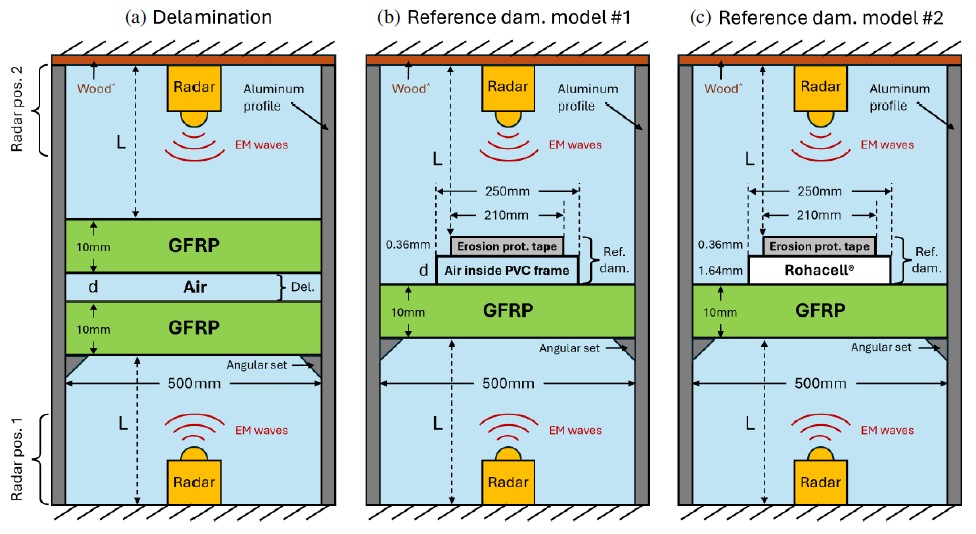A journal article demonstrating recent developments on a reversible damage model for the qualification of radar-based SHM systems has been accepted for publication in PIER C.
Abstract:
In this work, a delamination model for millimeter-wave inspections of glass fiber reinforced polymer (GFRP) is proposed that replicates the scattering characteristics of a real delamination. The model can be used for the performance assessment of conventional non-destructive testing (NDT) approaches, but also for structural health monitoring (SHM) applications with permanently installed radar sensors in the frequency band from 57–65 GHz. Parametric numerical and experimental investigations were carried out for three different cases: (a) delamination represented by two GFRP plates with a defined air gap between the plates, (b) erosion protection tape above a GFRP plate separated by an air gap, and (c) erosion protection tape on top of a rigid foam that has similar dielectric properties to air. All signals have been processed using a damage indicator approach (DI). The numerical and experimental results show a high degree of similarity in the DI curve as a function of the delamination thickess. The differences between simulation and experiment are between 0 and 0.3 mm in delamination thickness. Hence, the proposed model can be used for the qualification of radar-based NDT and SHM systems for various practical applications, e.g., wind turbine blades (WTBs), eliminating the need for expensive destructive testing.
More information:
Rao, M. E.; Moll, J.; Ebel, M.; Kraemer, P. & Krozer, V., Numerical and Experimental Analysis of a Reversible Damage Model for Millimeter-wave Diagnostics of Glass Fiber Reinforced Polymer Structures, PIER C, 2025 (accepted: December 2025)

